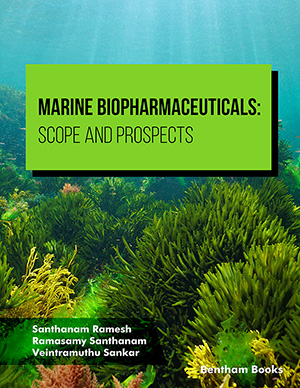Abstract
Background: Daucus gracilis Steinh belongs to the Apiaceae family. The flowers of this plant have been used by the population of western Algeria for the treatment of mouth ulcers. However, very few studies exist concerning the biological properties of essential oil of Daucus gracilis Steinh flowers.
Objectives: The purpose of this work was to study the chemical composition of the essential oil of Daucus gracilis flowers and to evaluate their antimicrobial, insecticidal and anti-inflammatory properties.
Methods: The distilled essential oil was analyzed by GC and GC-MS. The antimicrobial activity of the essential oil was evaluated using two methods i) diffusion method, and ii) micro dilution technique. The insecticidal activity of essential oil was evaluated against adults of Tribolium confusum by fumigant test. The in vitro assessment of the anti-inflammatory property of essential oil was assessed by the protein denaturation method.
Results: Daucus gracilis flowers essential oil mainly represented oxygenated monoterpenes such as geranyl acetate (18.3%), lavandulyl acetate (15.2%), lavandulyl isobutyrate (13.6%) and citronellyl isobutyrate (6.8%). According to the results of antimicrobial activity, the essential oil of flowers presented prominent inhibitory action against Aspergillus flavus (0.06 μg/mL), followed by Staphylococcus aureus, Escherichia faecalis, Bacillus cereus and Candida albicans with MIC values of 0.125 μg/mL. The Daucus gracilis essential oil flowers proved to be very biocidal toward adults of Tribolium confusum; mortality of 100% of the population was noted with a dose of 2 μl/L air after 24 hours of exposure. Furthermore, the oil has shown a very good inhibition of protein denaturation comparable to Diclofenac at a concentration of 30 μL/mL.
Conclusion: Daucus gracilis essential oil can be used as a pharmacological tools for inflammatory, antimicrobial and insecticidal properties.
Keywords: Essential oil, flowers, fumigant pesticides, antifungal effect, Candida albicans, Aspergillus flavus, inhibitory effect.
[http://dx.doi.org/10.20870/productions-animales.2017.30.1.2234]
[http://dx.doi.org/10.1016/j.medmal.2014.07.006] [PMID: 25169940]
[http://dx.doi.org/10.1016/S0335-7457(07)80015-3]
[http://dx.doi.org/10.1007/BF02973874] [PMID: 16178414]
[http://dx.doi.org/10.1111/are.12238]
[http://dx.doi.org/10.1016/j.foodchem.2006.06.035]
[http://dx.doi.org/10.1016/j.ijfoodmicro.2007.11.048] [PMID: 18190993]
[http://dx.doi.org/10.1016/0031-6865(94)00054-Y]
[http://dx.doi.org/10.1080/10412905.1995.9698556]
[http://dx.doi.org/10.1016/j.jep.2008.06.012] [PMID: 18606215]
[http://dx.doi.org/10.1007/s10600-007-0174-2]
[http://dx.doi.org/10.1186/1752-153X-4-16] [PMID: 20858266]
[http://dx.doi.org/10.1186/1752-153X-6-48] [PMID: 22647252]
[http://dx.doi.org/10.1177/1934578X1300800639]
[http://dx.doi.org/10.1002/cbdv.201600490] [PMID: 28212458]
[http://dx.doi.org/10.1016/j.apjtb.2015.08.004]
[http://dx.doi.org/10.2174/2210315509666190117152740]
[http://dx.doi.org/10.1002/cbdv.201600482] [PMID: 28109063]
[http://dx.doi.org/10.1016/0378-8741(87)90124-3] [PMID: 3325696]
[http://dx.doi.org/10.1016/S0031-9422(02)00477-6] [PMID: 12482458]
[http://dx.doi.org/10.1016/j.ecoenv.2013.11.013] [PMID: 24433784]
[http://dx.doi.org/10.2174/1573407215666190126152112]
[http://dx.doi.org/10.5530/pj.2012.29.7]
[http://dx.doi.org/10.1007/s00284-013-0354-1] [PMID: 23503789]
[http://dx.doi.org/10.1016/j.micpath.2020.103980] [PMID: 31962183]
[http://dx.doi.org/10.1016/j.jsps.2017.11.005] [PMID: 29379328]
[http://dx.doi.org/10.1016/S0261-2194(00)00158-7]
[http://dx.doi.org/10.1002/ps.322] [PMID: 11407032]
[http://dx.doi.org/10.1016/j.ecoenv.2016.07.035] [PMID: 27504617]
[http://dx.doi.org/10.1155/2013/459530] [PMID: 23724298]
[http://dx.doi.org/10.1078/094471102321621322] [PMID: 12587692]






























